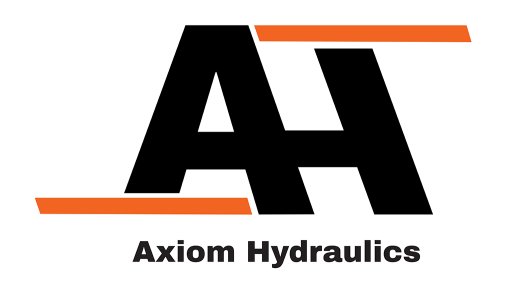Going beyond the Limits to Growth debate
The Limits to Growth (LTG) thesis was developed in the 1970s by a group of experts collectively called the Club of Rome. They used a computer model to link exponential population growth, income/gross domestic product and consumption, compared with the availability of finite resources. In a sense, they recreated the Malthusian limit. (At the time, they did not have sufficient data or the computing power that we have today.)
The LTG thesis predicted in some of the scenarios that, if it is business as usual, for some finite resources, the prospects will be pretty bleak and society and the environment will collapse. The truth is that many of the thesis’s predictions did not come true, a good example being peak oil. We did not run out of oil – we simply exploited frontier reserves, built more- efficient cars and found substitutes, while new technology allowed us to exploit energy sources like shale. In some countries, such as the US, conventional sources did peak but nobody took into account the effects of high oil prices and technological innovation in overcoming the peak oil phenomenon. There will be more scorn thrown at the peak oil thesis when electric vehicles (EVs) gain scale. EVs will keep oil prices down and we may end up with more oil than we need.
There are revisionist views from where the LTG theorists left off in the work of Jorgen Randers and others, such as Tim Jackson. Essentially, it is what you make of the relation between different variables, such as population growth (P), which will stabilise around nine-billion in 2050; income share (I), consumption demand (C), resource use (R), technology change (T) and price (P). Your view on each will determine – to an extent – the conclusions you can draw, unless you have the problem of bias.
Alarmists tend to make too much of population growth and consumption but fail to contextualise these variables in relation to other variables. Resource intensity tends to peak and then decline in underdeveloped countries, and so they tend to display investment intensity and growth in the early phases, when demand has not been satiated.
One should expect all this and not be alarmed. Randers tends to take a more optimistic view but, on climate change, he is concerned that we have crossed the threshold and need to intensify investment in new technology and change our behaviour. Consulting firm McKinsey shares this view. It published an interesting report a couple years back called ‘The Three Billion Revolution’, which relates income rise, due to a growing global middle class, with concomitant challenges to resource consumption, scarcity or availability. The McKinsey report identified 13 areas where interventions can be made that can resolve most of the challenges. Interestingly, most of what the firm proposes revolves around dealing with inefficiencies in extraction, production, transport and consumption.
One cannot look at exponential growth in population as if it alone leads to a linear intensity in resource demand. Different regions have different intensities and co-dependences. China’s rate of growth is dependent on export demand and its resources needs – especially its need for commodities – influences resource intensity, investment and growth in regions such as Africa, Latin America and the Middle East. The US exports its ecological footprint to China, which, in turn, exports its footprint to Africa and other regions.
One has to also look at resource intensity in relation to how income share grows in a more equal way. China’s ageing population and its high savings culture (the country has no public health or welfare system) are causing a slowdown in growth, as China seeks to rebalance export-led growth with consumption-based growth. As resource-intense sectors peak, growth occurs in the services sector. Not all economic growth reflects resource intensity. In any case, China needs some level of high growth to sustain what economist Angus Deaton calls “the great escape” from poverty and underdevelopment, given its population size.
Since innovation is not static, it is possible to envisage sustained productivity and growth with improvements in technology and innovation. We can satisfy more demand with less resource intensity. Not all countries will need the same intensity of growth in the future. One must also emphasise that growth estimates often also reflect growth in services, especially financial services, and so we need to often strip these figures out to get a true relation between resource intensity and growth.
The real challenge – which is shared by Randers – is that, in the last 30 years, governments did not invest enough in technological innovation. In fact, with enough investment in technological innovation, our situation could be much better in the future than today, making us better able to deal with many of the externalities problems we face.
The private sector has not invested in new technology. Most of the available finance has gone into asset classes that are best described as financialised assets. This form of finance is too short term. To sustain long-term finance in new technology and infrastructure, the lead will have to come from public finance.
We should encourage richer countries to invest more in scaling these new technologies. China, the US, Japan and Germany should lead the way. We should also encourage them to remove subsidies for fossil fuels and unsustainable farming practices and divert these to cleaner- technology solutions.
Their scaling of technologies will lead to price reductions, which will make it easier for countries in Africa to ‘leapfrog’ so that, if they have a growing middle class, resource intensity and growth could be decoupled.
The LTG thesis is outdated. It often lends itself to supporting alarmist tendencies. The world is a lot more complex. We will not run out of resources.
Article Enquiry
Email Article
Save Article
Feedback
To advertise email advertising@creamermedia.co.za or click here
Comments
Press Office
Announcements
What's On
Subscribe to improve your user experience...
Option 1 (equivalent of R125 a month):
Receive a weekly copy of Creamer Media's Engineering News & Mining Weekly magazine
(print copy for those in South Africa and e-magazine for those outside of South Africa)
Receive daily email newsletters
Access to full search results
Access archive of magazine back copies
Access to Projects in Progress
Access to ONE Research Report of your choice in PDF format
Option 2 (equivalent of R375 a month):
All benefits from Option 1
PLUS
Access to Creamer Media's Research Channel Africa for ALL Research Reports, in PDF format, on various industrial and mining sectors
including Electricity; Water; Energy Transition; Hydrogen; Roads, Rail and Ports; Coal; Gold; Platinum; Battery Metals; etc.
Already a subscriber?
Forgotten your password?
Receive weekly copy of Creamer Media's Engineering News & Mining Weekly magazine (print copy for those in South Africa and e-magazine for those outside of South Africa)
➕
Recieve daily email newsletters
➕
Access to full search results
➕
Access archive of magazine back copies
➕
Access to Projects in Progress
➕
Access to ONE Research Report of your choice in PDF format
RESEARCH CHANNEL AFRICA
R4500 (equivalent of R375 a month)
SUBSCRIBEAll benefits from Option 1
➕
Access to Creamer Media's Research Channel Africa for ALL Research Reports on various industrial and mining sectors, in PDF format, including on:
Electricity
➕
Water
➕
Energy Transition
➕
Hydrogen
➕
Roads, Rail and Ports
➕
Coal
➕
Gold
➕
Platinum
➕
Battery Metals
➕
etc.
Receive all benefits from Option 1 or Option 2 delivered to numerous people at your company
➕
Multiple User names and Passwords for simultaneous log-ins
➕
Intranet integration access to all in your organisation

















